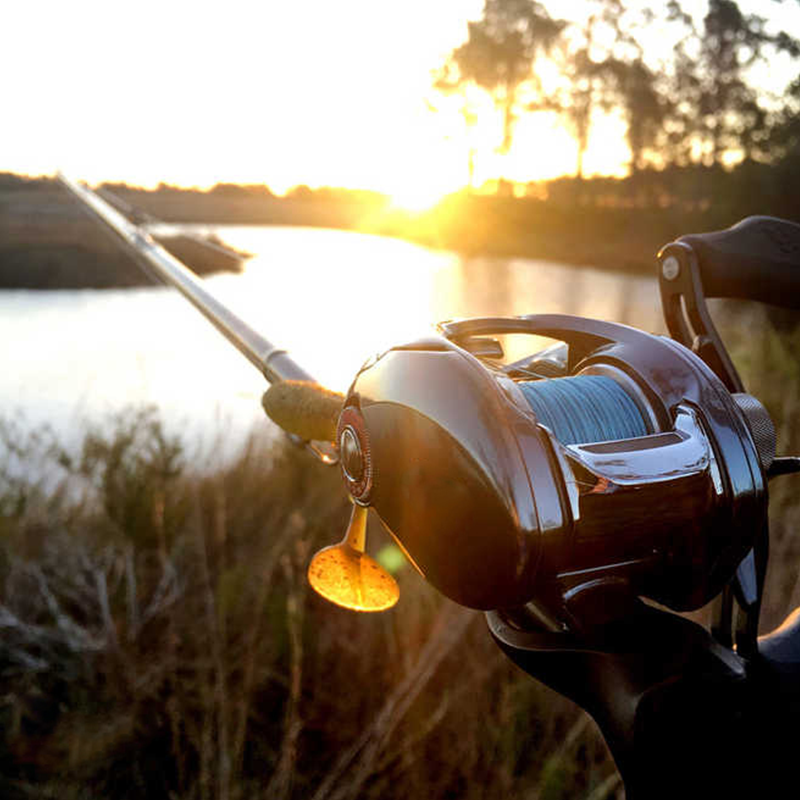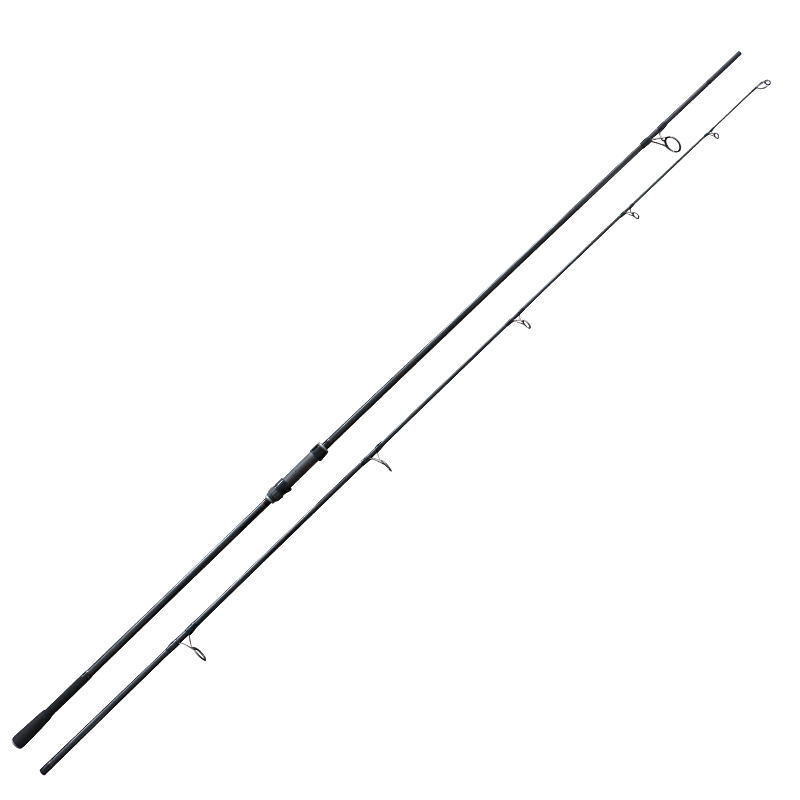
Are you new to fishing and unsure which rod to choose? The right fishing rod can make all the difference in your experience.
In this guide, we'll help you select the perfect fishing rod based on your needs and skill level. You'll learn how to choose the right length, power, and material for a successful start in fishing.
Understanding Fishing Rod Basics
What is a Fishing Rod and Why is It Important?
A fishing rod is the primary tool used to catch fish. It helps you cast your line and reel in your catch. The right rod improves your chances of success and makes the process more enjoyable.
Fishing rods come in many types, each designed for specific fishing needs. Whether you're fishing in freshwater or saltwater, or targeting small or large fish, choosing the right rod is crucial. It directly affects your accuracy, casting distance, and overall fishing experience.
Key Features of a Fishing Rod
Length of the Rod
The length of the rod plays a big role in how far you can cast. Longer rods (around 6 feet) help with distance, while shorter rods (around 4 feet) offer better control in tight spaces.
For beginners, a rod length of 4 to 6 feet is ideal. It’s easy to handle, and you’ll have more control over the line, making it easier to catch smaller fish.
Rod Power and Action
Rod power refers to its strength and ability to handle fish. Light power rods are best for small fish, while heavy power rods can handle larger catches. Medium power rods offer a balance for most beginners.
Rod action describes how much the rod bends. A fast action rod bends at the tip, making it sensitive and great for quick hook sets. Medium action bends more through the middle, while slow action rods bend through most of the rod, giving more control.
For beginners, a medium power, fast action rod is a great choice. It’s versatile and works well in different fishing situations.
Material and Construction
Most fishing rods are made from graphite or fiberglass. Graphite rods are lightweight and sensitive, allowing you to feel even the smallest bites. Fiberglass rods are more durable and better for beginners since they can handle rough use.
Each material has its pros and cons. Graphite is better for experienced anglers who want sensitivity, while fiberglass is more forgiving and reliable for beginners.
Handle and Grip
The handle is one of the most important features for comfort. It should feel good in your hand, allowing you to fish for hours without discomfort. Handles can be made from cork, foam, or rubber, each offering different levels of grip and comfort.
When selecting a rod, make sure the handle feels comfortable and fits well in your hand. This will help you focus on the fishing, not the discomfort.
Choosing the Right Fishing Rod for Your Specific Needs
What Type of Fishing Will You Be Doing?
Freshwater vs Saltwater Fishing
Freshwater and saltwater rods are designed differently due to the unique environments they operate in. Freshwater rods are generally lighter and designed for fishing in lakes, ponds, and rivers. These rods are generally easier to handle and better suited for catching smaller fish like trout, bass, or panfish.
Saltwater rods need to be much more durable, as they face the challenges of salt corrosion and larger fish species. They are built with stronger materials and are often heavier to withstand the power of big fish like marlins or tunas. Additionally, saltwater rods usually have reinforced components to handle the harsh conditions of the ocean.
If you plan to fish in both freshwater and saltwater, consider getting a rod that’s versatile enough for both. Some rods are made with corrosion-resistant materials that work well in either environment.
Targeting Different Fish Species
The fish you're after will also affect your rod choice. For smaller fish like trout and panfish, a light or medium-light rod is perfect. These rods allow for better sensitivity and control.
For larger fish, such as bass, pike, or catfish, a heavier rod with more power will be necessary. These rods offer the strength needed to reel in bigger catches without breaking the line.
Rod Selection Based on Fishing Location
Whether you're fishing from a boat or the shore will influence your rod choice. From a boat, you’ll typically use a shorter, more powerful rod for better control in tight spaces. Shore fishing usually requires a longer rod for casting longer distances. Adjust the length and power to suit where you'll be fishing most often.
What is Your Fishing Budget?
Budget-Friendly Fishing Rods
If you're just starting out, it's smart to stick to a budget. There are plenty of good options under $100 that will work for beginners. Look for rods with a balance of quality and price, such as a simple spinning rod. These rods are affordable and durable, making them perfect for new anglers.
When choosing a budget rod, pay attention to the material. Fiberglass rods are often cheaper but still strong, making them great for beginners.
Premium Fishing Rods for Beginners
Sometimes, spending a bit more can pay off in the long run. Premium rods tend to offer better sensitivity, lighter materials, and improved durability. If you’re serious about fishing, consider investing in a rod made from graphite or high-modulus carbon fiber. These materials provide better performance and a longer lifespan.
Premium rods also often come with advanced features, such as higher-quality reel seats and guides, which enhance the overall fishing experience.
Balancing Cost and Quality
You don’t always need to buy the most expensive rod to get the best performance. It’s about finding a balance. Spend enough to get a rod that suits your needs and will last. Focus on quality construction, material, and comfort over just the brand name.
When you’re on a budget, focus on rods that offer the best value, considering how long they will last and how well they perform for your style of fishing.
Rod Comparison Summary
| Feature | Freshwater Rods | Saltwater Rods | Budget Rods (under $100) | Premium Rods (over $100) |
| Material | Fiberglass, Graphite | Corrosion-resistant, stronger materials | Fiberglass | Graphite, Carbon fiber |
| Best For | Small fish (trout, bass, panfish) | Larger fish (marlin, tuna) | Beginners, light to medium use | Serious anglers, frequent use |
| Length | 4-7 feet | 6-10 feet | 6-7 feet | 7-10 feet |
| Power/Action | Light to Medium | Heavy, reinforced | Light to Medium | Medium to Heavy |
| Durability | Moderate | High (resistant to corrosion) | Moderate | High |
| Price | Affordable | Expensive | Affordable (under $100) | Expensive (over $100) |
This table provides a quick comparison to help you understand the differences in rods based on the type of fishing, species targeted, location, and your budget. Use it to narrow down your options and choose the right fishing rod for your needs.

How to Care for Your Fishing Rod
Tips on Maintaining Your Fishing Rod
Taking care of your fishing rod is essential to keep it in good condition for years to come. Proper maintenance can prevent damage and ensure optimal performance.
Cleaning Your Rod
After each fishing trip, it's important to clean your rod to remove dirt, saltwater, and other debris. Use a damp cloth to wipe down the rod and guides. For tougher dirt, a mild soap solution can help. Avoid using harsh chemicals, as they may damage the rod's finish.
Cleaning Supplies:
Storing Your Rod Properly
Proper storage is key to extending the life of your fishing rod. Never leave your rod exposed to extreme temperatures or direct sunlight, as this can weaken the material. Store your rod in a rod holder or case to prevent bending or breaking. If you’re not using your rod for a while, make sure it's stored in a cool, dry place.
Storage Tips:
Keep your rod in a protective case or rack
Store it upright or horizontally, avoiding pressure on the rod
Avoid storing in hot or humid environments
Checking for Damage
Before each use, inspect your rod for any signs of wear or damage. Look for cracks or nicks in the rod and check that the guides are intact. If you notice any issues, it’s best to fix or replace the damaged part to avoid problems while fishing.
How to Inspect:
Check the rod for cracks, bends, or other visible damage
Inspect the guides for any wear or rust
Look at the reel seat and handle for any loose parts
If your rod gets damaged, depending on the severity, you might be able to repair it yourself or take it to a professional for help.
Conclusion
Choosing the right fishing rod can make all the difference in your fishing experience. Our rods are designed for both beginners and professionals, offering exceptional performance and durability. With options like high-quality Carbon Fiber rods, you'll enjoy great sensitivity and long-lasting use. Whether you're fishing for bass, trout, or more, our Fishing Rod Combos provide the versatility you need.
Explore our range today and find the perfect rod for your fishing needs. If you have any questions, don't hesitate to reach out to us.
FAQs
Q: How Do I Know What Length Rod to Choose?
A: For beginners, a 4 to 6-foot rod is ideal. Shorter rods offer better control, while longer rods provide more casting distance. Choose based on fish size and fishing location.
Q: What is the Best Rod for Kids?
A: A shorter, lightweight rod is best for kids, usually around 4 to 5 feet long. Choose a rod with a medium to light power and a comfortable grip.
Q: Do I Need to Buy a Fishing Rod Combo or Separate Rod and Reel?
A: Rod and reel combos are great for beginners as they are easy to use and more affordable. Separate pieces offer customization but may require more knowledge.



